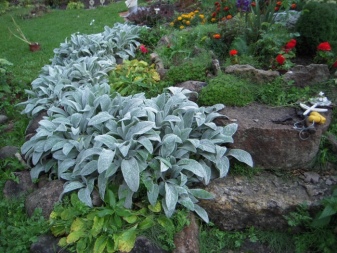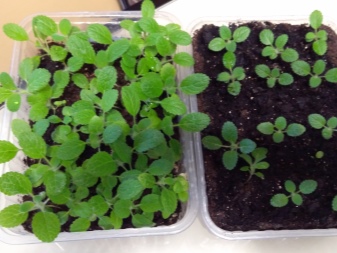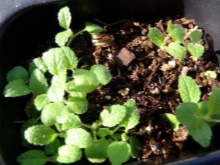Woolly chisel: description, planting and care

Woolly chisel or Byzantine stachis is an original plant widely used in landscape design. Its popularity is mainly due to the unusual leaf cover, reminiscent of the color and texture of "sheep's ears". It is for this property that the plant is highly valued and actively cultivated by gardeners. The beautifully delineated leaves of the plant with silvery pubescence go well with different types of landscapes. Woolly chaff can be planted in a group, made the center of a flower bed, used as a background for other perennials and annuals.
The description of Byzantine stachis allows you to learn more about it and appreciate all the beauty and decorativeness of the plant. The perennial is quite capricious, planting and caring for it requires some effort. However, despite the need for a certain composition of the soil and the frequency of watering, the woolly chisel is perfect for decorating rockeries or alpine slides; its use in landscape design makes it possible to bring interesting accents to the decor of the site.


Peculiarities
Woolly scrub (Stachys lanata) is a herbaceous plant belonging to perennial crops. It is also often referred to as the Byzantine Stachis (Stachys byzantina). Both names are used equally frequently by botanists. Informally, this representative of the Chistets clan is called "sheep's ears" for the resemblance to this part of the body of a farm animal. In nature, this unusual, very ornamental plant is found in the subtropical climate of the Black Sea regions of Russia and Ukraine, in the Caucasus, Iran, Armenia and Turkey. The wild flower prefers stony poor soils, needs an abundance of sunlight, and does not tolerate a cold snap.
Woolly chisel belongs to the genus Stachys, which is a member of the Lamiaceae family.

The botanical description of the plant indicates such characteristic features as:
- height 20-60 cm;
- multi-stalk;
- straight or branched shoots;
- the presence of tomentose woolly pubescence;
- green leaf plate with silvery hairs;
- lower leaves in the form of oblong lines or blades;
- inflorescence - false ear, whorled, pink, purple or blue;
- fruit nuts;
- flowering from May to August;
- semi-shrub type of shoot formation.



Stachys lanata is successfully cultivated in central Russia, in the south, in the Altai Territory and Western Siberia. But its cultivation, subject to the creation of a shelter for the winter, is permissible in other climatic zones with colder growing conditions.
Varieties
Among the popular varieties of woolly chisel especially decorative varieties can be noted.
- Silver Carpet. A variety that fully lives up to its name. It covers the ground with an almost solid silvery cover, the leaves of the plant are very densely arranged. Peduncles are almost not formed on this variety, for which summer residents highly appreciate it. The plant works well for creating curbs along paths.

- Cotton Ball. The variety is very decorative, when it blooms, instead of small inflorescences, rounded bolls are formed, resembling cotton. The leaves are more pubescent than those of other varieties, very pleasant tactile, slightly curved. The plant is quite tall, it can become the centerpiece of a flower bed or a flower bed.


- Big Ears. In this variety of woolly, the silvery shade does not prevail over the green background, but harmoniously complements it. The name "big ears" is well deserved - these "sheep ears" are up to 25 cm long. The plant is well suited for planting along garden paths and terraces.


- Primrose Heron. Byzantine Stachis of this variety has an atypical color, which is dominated by golden-green shades. The leaves of the plant are also pubescent, have its characteristic size and shape.


- Sheila Macqueen. The variety is dwarf, grows no more than 15 cm in height, almost does not form peduncles. This makes it very attractive for growing as a ground cover plant. The tighter its fit, the more effective the formed "carpet" with a noble silvery sheen will be.


- Silky Fleese. Another variety, the name of which evokes persistent textile associations. "Silk fleece" is very soft to the touch, the villi on the leaves are densely arranged, whitish, like felt.
The semi-shrub grows up to 25 cm, looks spectacular in the frame of paths and borders.

How to plant?
The preparation of the seeds of the woolly purse for planting begins at the end of February. Planting is carried out directly into open ground at average temperatures above 0 degrees and the absence of soil freezing to a depth of 10 cm. In a month the crops sprout. In the form of seedlings in open ground, plants when grown at home are not transferred too early. For the middle lane, planting dates are in mid-April or early May. In the south, sowing of seeds is often carried out in the autumn months at temperatures not lower than +10 degrees.
Preparing the soil for the "sheep's ears" is not difficult. The plant retains its color and leaf edge only on not very fertile soils. For the same reason, it is not recommended to be zealous with fertilizing the soil, otherwise the unusual edge of the leaves will be replaced by the usual green color with a barely noticeable fluff on the surface.


When choosing a site for planting on a site, it is worth giving preference to light, breathable soils. The choice of rocky or loamy soil with neutral acidity will be optimal. If its level is too high, it is recommended to add charcoal or lime to the soil. The selected place must be thoroughly loosened to a depth of 2 shovel bayonets. After that, young plants or a transplanted adult bush are placed in the prepared soil.
When choosing a location, it is recommended to give preference to well-lit or slightly shaded areas. It is in the sun that the woolly chisel gets its special decorative effect. You also need to take care of protecting it from drafts, drainage, if the groundwater is high.


How to take care of it properly?
Woolly cleanser does not require complex care. Growing it implies a minimum set of actions that are customary to perform when growing different garden plants. For example, watering is required with the introduction of moisture at the root; it is not recommended to pour water on the leaves. In addition, you will have to periodically perform the following steps.
- Watering. The culture does not require intensive moisture, but it is also impossible to bring it to dryness of the soil. On average, watering in dry weather is done every 10 days. If the leaves begin to fall off, this is a sign that there is not enough moisture. It is necessary to irrigate at the usual time no earlier than the ground around the base of the bush dries out, during overflow, decay of the root collar may begin.

- Weeding and loosening. They allow you to free the root area from weeds that can take away moisture and nutrition from the cultivated plant. The woolly scrub is weeded at least 2 times a month, complementing the procedure with light loosening. The soil cultivation depth should be about 5 cm.


- Top dressing. Fertilizers need to be applied no more than 1 time a year, using well-rotted organic fertilizers.To increase the intensity of growth, you can use a mixture of unconcentrated chicken manure and saltpeter. You should not overfeed the plant, it may lose its decorative effect.


- Removing inflorescences. When used in landscape design, the inflorescences of the woolen woolen are most often removed immediately after their formation. If the flowering has already passed, the wilted areas should be removed. In addition, any dying lower leaves are also cut to stimulate the growth of new ones.


- Preparing for winter. If the air temperature in winter drops below -30 degrees, it is imperative to cover the plant with spruce branches.
It is worth noting that in colder climates, additional shelter is not required.

Reproduction methods
Among the methods of reproduction that are relevant for the woolen purse are the use of seeds, cuttings or dividing the bush. In the first case, after flowering, false panicles are collected with planting material inside. They are dried, then the seeds are removed. For their planting, a prepared area of open ground or a container with a soil mixture on a peat-sand base is required.
Seeds are poured over the soil, without deepening, sprinkled on top with a thin layer of quartz sand. Instead of watering, spraying from a spray bottle is used. It is done daily. The temperature during germination should be maintained in the range of +25 degrees and above, in this case, you can do without a greenhouse. After the sprouts emerge, they dive when 2 leaves appear.



Cutting is an equally popular and much faster way of reproduction of the woolly chickweed. Strong shoots with 3-4 leaves on each are cut from the plant, they are placed in the soil for rooting, they are provided with regular but moderate watering. The seedlings are kept together until rooting, then transplanted.
The division of the bush can be done every 2-3 years. This rejuvenating treatment is performed in the springtime. Division is carried out manually, then the bushes are placed each in its own hole.


Diseases and pests
Normally, the woolly chisel almost never undergoes the development of diseases. Excessive watering leads to the formation of root rot, contributes to the emergence and spread of fungal infections. If the plants are badly damaged, it is better to destroy them, and then treat the area with fungicidal preparations.


Use in landscape design
Woolly chisel is able to decorate absolutely any garden. Landscape designers most often consider it as an element of rock gardens and rockeries. But Byzantine stachis also feels great in the composition of borders, while peduncles are removed or weakly flowering varieties are selected. They also use it in the frame of paths, large and small garden beds. Especially original looks the woolly net, planted on the retaining walls.


With the right choice of location, this plant tolerates partial shade well. Its combination with fern, milkweed, hosts and near water bodies looks interesting.
Byzantine Stachis with its cold shades of leaves can be a great addition to the planting of various ornamental shrubs.


The woolly chisel looks good in combination with a bright chives-bow. When composing compositions, it is very important to cut off the inflorescences in a timely manner, keeping the most decorative part - the leaves, in the foreground. This plant goes well with pink roses, sweet lungwort, marigolds, sheep or cinquefoil.



For more information on the woolly henchman, see the next video.







































































































The comment was sent successfully.